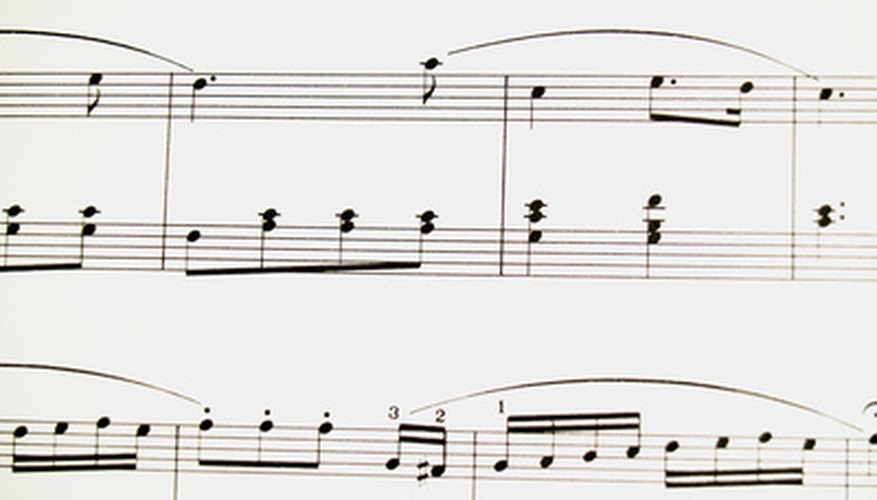If you're a cellist who wants to play a particular piano composition and can't find an arrangement for solo cello then it's possible to make a transcription yourself. Due to an abundance of computer notation software, transcribing from one instrument to another does not require a vast knowledge of music theory. Transcribing from a piano score to a solo cello score only requires knowledge of the performing capabilities of the instruments your transcribing to and from.
Purchase scores for both solo cello and cello and piano. Access to other arrangements will help to familiarise you with the note range and capabilities of the cello. You don't need to take cello lessons; however, it's useful to know the range and what types of double stops (multiple notes played simultaneously) are possible. You can download many free scores from the International Music Score Library Project (see "Resources").
- If you're a cellist who wants to play a particular piano composition and can't find an arrangement for solo cello then it's possible to make a transcription yourself.
- You don't need to take cello lessons; however, it's useful to know the range and what types of double stops (multiple notes played simultaneously) are possible.
Sight read the melody of the piano score. Play through the melody on the piano first and then read it on the cello. Reading through the melody will help you determine what range and key you wish to transpose to. If you're not a pianist simply play through the melody line or the top notes of the piano score on the piano. You'll have a better idea of which notes you will need to leave out of the solo cello score when you later transcribe from piano to cello.
Import the music you're transcribing into a software notation. Some notation programs (such as Sibelius) allow you to import scanned sheet music and even hand written scores to edit. If you're already familiar with programs such as "Finale" or "Sibelius" then it may be more convenient to use a computer to write and print your score. Keep in mind that a neatly printed score would be preferred by the other performers instead of a hand copied score. Of course, if you're only transcribing for your own enjoyment then a hand written score will be fine.
- Sight read the melody of the piano score.
- If you're already familiar with programs such as "Finale" or "Sibelius" then it may be more convenient to use a computer to write and print your score.
Transpose the notes on the piano that are note in the performing range of the cello. Most notation software can transpose to any key and interval automatically. You may not even need to transpose to a different key because the cello and piano are both concert-pitched instruments. Concert pitch means the note written is the note that sounds. Depending on the complexity of the music the transposing of clefs may be required. Cello music uses the base, tenor and treble clef. The tenor clef is primarily used only in cello and trombone instrumental music in order to avoid excessive ledger lines.
- Transpose the notes on the piano that are note in the performing range of the cello.
- The tenor clef is primarily used only in cello and trombone instrumental music in order to avoid excessive ledger lines.
Add dynamic, tempo and performance indications, once you've transposed to the appropriate key. Performance indications include phrasing, bowing techniques (such as pizzicato or col legno) and dynamics and tempo markings. Now you can print and enjoy.
TIP
If you don't have access to notation software such as Finale or Sibelius you can access free notation software online such as Noteflight or MuseScore.
